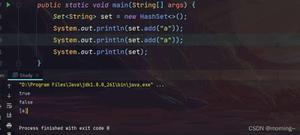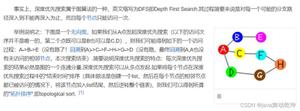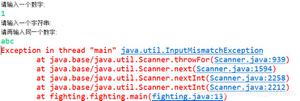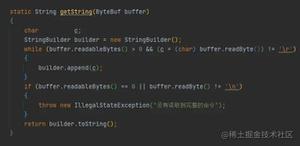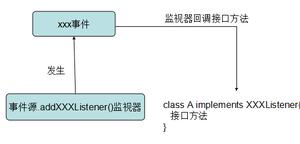JavaScript的this关键字的理解
概念性的概述this
当一个函数创建后,一个关键字this就随之(在后台)创建,它链接到一个对象,而函数正是在这个对象中进行操作。换句话说,关键字this可在函数中使用,是对一个对象的引用,而函数正是该对象的属性或方法。
让我们来看这个对象:
<!DOCTYPE html><html lang="en"><body><script>
var cody = {
living:true,
age:23,
gender:'male',
getGender:function(){return cody.gender;}
};
console.log(cody.getGender()); // logs 'male'
</script></body></html>
注意在函数getGender里,由于在cody对象内部,我们可以通过.来获取gender属性(也就是cody.gender)。也可以用this来获取cody对象,因为this正是指向cody对象。
<!DOCTYPE html><html lang="en"><body><script>
var cody = {
living:true,
age:23,
gender:'male',
getGender:function(){return this.gender;}
};
console.log(cody.getGender()); // logs 'male'
</script></body></html>
this.gender中this指向cody对象,而getGender函数可以操作cody对象。
关于this的主题可能有点让人感到困惑,其实不必如此。仅记住,通常,this指向的对象正是包含函数的对象,而不是函数本身(当然也有例外,例如采用关键字new或者call()和apply())。
重要提示
- 关键字this就像其他的变量,唯一不同就是你不能更改它。
- 不同于传给函数的其他参数和变量,在调用函数的对象中,this是一个关键字(而不是属性)。
如何确定this的值?
this传递给所有的函数,它的值取决于函数运行时何时被调用。这里请注意,因为这是你需要记住的一个很特别的地方。
下面的代码中myObject对象有个属性sayFoo,它指向函数sayFoo。当在全局域中调用sayFoo函数时,this指向window对象。当myObject调用函数时,this指向的是myObject。
因为myObject有个叫foo的属性,在这里被使用。
<!DOCTYPE html><html lang="en"><body><script>
var foo = 'foo';
var myObject = {foo: 'I am myObject.foo'};
var sayFoo = function() {
console.log(this['foo']);
};
// give myObject a sayFoo property and have it point to sayFoo function
myObject.sayFoo = sayFoo;
myObject.sayFoo(); // logs 'I am myObject.foo' 12
sayFoo(); // logs 'foo'
</script></body></html>
很清楚,this的值取决于函数什么时候被调用。myObject.sayFoo和sayFoo都指向同样的函数,但sayFoo()调用的上下文不同,this的值也就不同。下面是类似的代码,head对象(window)显式使用,希望对你有用。
<!DOCTYPE html><html lang="en"><body><script>
window.foo = 'foo';
window.myObject = {foo: 'I am myObject.foo'};
window.sayFoo = function() { ! console.log(this.foo); };
window.myObject.sayFoo = window.sayFoo;
window.myObject.sayFoo();
window.sayFoo();
</script></body></html>
确保当你有多个引用指向同一个函数的时候,你清楚的知道this的值是随调用函数的上下文的不同而改变。
重要提示
- 除了this以外的所有变量和参数都属于静态变量范围(lexical scope)。
在嵌入函数内this指向head对象
你可能想知道在嵌入在另外一个函数的函数中使用this会发生什么事。不幸的是在ECMA 3中,this不遵循规律,它不指向函数属于的对象,而是指向head对象(浏览器的window对象)。
在下面的代码,func2和func3中的this不再指向myObject,而是head对象。
<!DOCTYPE html><html lang="en"><body><script>
var myObject = {
func1:function() {
console.log(this); //logs myObject
varfunc2=function() {
console.log(this); //logs window, and will do so from this point on
varfunc3=function() {
console.log(this); //logs window, as it's the head object
}();
}();
}
};
myObject.func1();
</script></body></html>
然而在ECMAScript 5中,这个问题将会得到修正。现在,你应该意识到这个问题,尤其是当你将一个函数的值传递到另一个函数时。
看看下面的代码,将一个匿名函数传给foo.func1,当在foo.func1中调用匿名函数(函数嵌套在另一个函数中),匿名函数中this将会指向是head对象。
<!DOCTYPE html><html lang="en"><body><script>
var foo = {
func1:function(bar){
bar(); //logs window, not foo
console.log(this);//the this keyword here will be a reference to foo object
}
};
foo.func1(function(){console.log(this)});
</script></body></html>
现在你不会忘了,如果包含this的函数在另一个函数中,或者被另一个函数调用,this的值将会指向的是head对象(再说一次,这将在ECMAScript 5中被修正。)
解决嵌套函数的问题
为了使this的值不丢失,你可以在父函数中使用一个作用域链(scope chain)来保存对this进行引用。下面的代码中,使用一个叫that的变量,利用它的作用域,我们可以更好的保存函数上下文。
<!DOCTYPE html><html lang="en"><body><script>
var myObject = {
myProperty:'Icanseethelight',
myMethod:function() {
var that=this; //store a reference to this (i.e.myObject) in myMethod scope varhelperFunctionfunction(){//childfunction
var helperFunction function() { //childfunction
//logs 'I can see the light' via scope chain because that=this
console.log(that.myProperty); //logs 'I can see the light'
console.log(this); // logs window object, if we don't use "that"
}();
}
}
myObject.myMethod(); // invoke myMethod
</script></body></html>
控制this的值
this的值通常取决于调用函数的上下文(除非使用关键字new,稍后会为你介绍),但是你可以用apply()或call()指定触发一个函数时this指向的对象,以改变/控制this的值。用这两种方法就好像再说:“嘿,调用X函数,但让Z对象来作this的值。”这样做,JavaScript默认的this的值将被更改。
下面,我们创建了一个对象和一个函数,然后我们通过call()来触发函数,所以函数中的this指向的是myOjbect。在myFunction函数中的this会操作myObject而不是head对象,这样我们就改变了在myFunction中this指向的对象。
<!DOCTYPE html><html lang="en"><body><script>
var myObject = {};
var myFunction = function(param1, param2) {
//setviacall()'this'points to my Object when function is invoked
this.foo = param1;
this.bar = param2;
console.log(this); //logs Object{foo = 'foo', bar = 'bar'}
};
myFunction.call(myObject, 'foo', 'bar'); // invoke function, set this value to myObject
console.log(myObject) // logs Object {foo = 'foo', bar = 'bar'}
</script></body></html>
在上面的例子,我们用了call(),apply()也可适用于同样用法,二者的不同之处在于参数如何传给函数。用call(),参数用逗号分开,而用apply(),参数放在一个数组中传递。下面是同样的代码,但是用apply()。
<!DOCTYPE html><html lang="en"><body><script>
var myObject = {};
var myFunction = function(param1, param2) {
//set via apply(), this points to my Object when function is invoked
this.foo=param1;
this.bar=param2;
console.log(this); // logs Object{foo='foo', bar='bar'}
};
myFunction.apply(myObject, ['foo', 'bar']); // invoke function, set this value
console.log(myObject); // logs Object {foo = 'foo', bar = 'bar'}
</script></body></html>
在自定义构造函数中用this
当函数用关键字new来触发,this的值–由于在构造函数中声明–指向实例本身。换种说法:在构造函数中,我们可以在对象真正创建之前,就用this来指定对象。这样看来,this值的更改和call()或apply()相似。
下面,我们构造了一个构造函数Person,this指向创建的对象。当Person的对象创建后,this指向这个对象,并将属性name放在对象内,值为传给这个构造函数的参数值(name)。
<!DOCTYPE html><html lang="en"><body><script>
var Person = function(name) {
this.name = name || 'johndoe'; // this will refer to the instanc ecreated
}
var cody = new Person('Cody Lindley'); // create an instance, based on Person constructor
console.log(cody.name); // logs 'Cody Lindley'
</script></body></html>
这样,当用关键字new触发构造函数时,this指向“要创建的对象”。那么如果我们没有用关键字new,this的值将会指向触发Person的上下文——这时是head对象。让我们来看看下面的代码。
<!DOCTYPE html><html lang="en"><body><script>
var Person = function(name) {
this.name=name||'johndoe';
}
var cody = Person('Cody Lindley'); // notice we did not use 'new'
console.log(cody.name); // undefined, the value is actually set at window.name
console.log(window.name); // logs 'Cody Lindley'
</script></body></html>
在prototype方法内的this指向构造实例
当一个方法作为一个构造函数的prototype属性时,这个方法中的this指向触发方法的实例。这里,我们有一个Person()的构造函数,它需要person的全名(full name),为了获得全名(full name),我们在Person.prototype中加入了一个whatIsMyFullName方法,所有的Person实例都继承该方法。这个方法中的this指向触发这个方法的实例(以及它的属性)。
下面我创建了两个Person对象(cody和lisa),继承的whatIsMyFullName方法包含的this就指向这个实例。
<!DOCTYPE html><html lang="en"><body><script>
var Person = function(x){
if(x){this.fullName = x};
};
Person.prototype.whatIsMyFullName = function() {
return this.fullName; // 'this' refers to the instance created from Person()
}
var cody = new Person('cody lindley');
var lisa = new Person('lisa lindley');
// call the inherited whatIsMyFullName method, which uses this to refer to the instance
console.log(cody.whatIsMyFullName(), lisa.whatIsMyFullName());
/* The prototype chain is still in effect, so if the instance does not have a
fullName property, it will look for it in the prototype chain.
Below, we add a fullName property to both the Person prototype and the Object
prototype. See notes. */
Object.prototype.fullName = 'John Doe';
var john = new Person(); // no argument is passed so fullName is not added to instance
console.log(john.whatIsMyFullName()); // logs 'John Doe'
</script></body></html>
在prototype对象内的方法里使用this,this就指向实例。如果实例不包含属性的话,prototype查找便开始了。
提示
- 如果this指向的对象不包含想要查找的属性,那么这时对于任何属性都适用的法则在这里也适用,也就是,属性会沿着prototype链(prototype chain)上“寻找”。所以在我们的例子中,如果实例中不包含fullName属性,那么fullName就会查找Person.prototype.fullName,然后是Object.prototype.fullName。
查看更多JavaScript的语法,大家可以关注:《JavaScript 参考教程》、《JavaScript代码风格指南》,也希望大家多多支持。
以上是 JavaScript的this关键字的理解 的全部内容, 来源链接: utcz.com/z/337446.html


